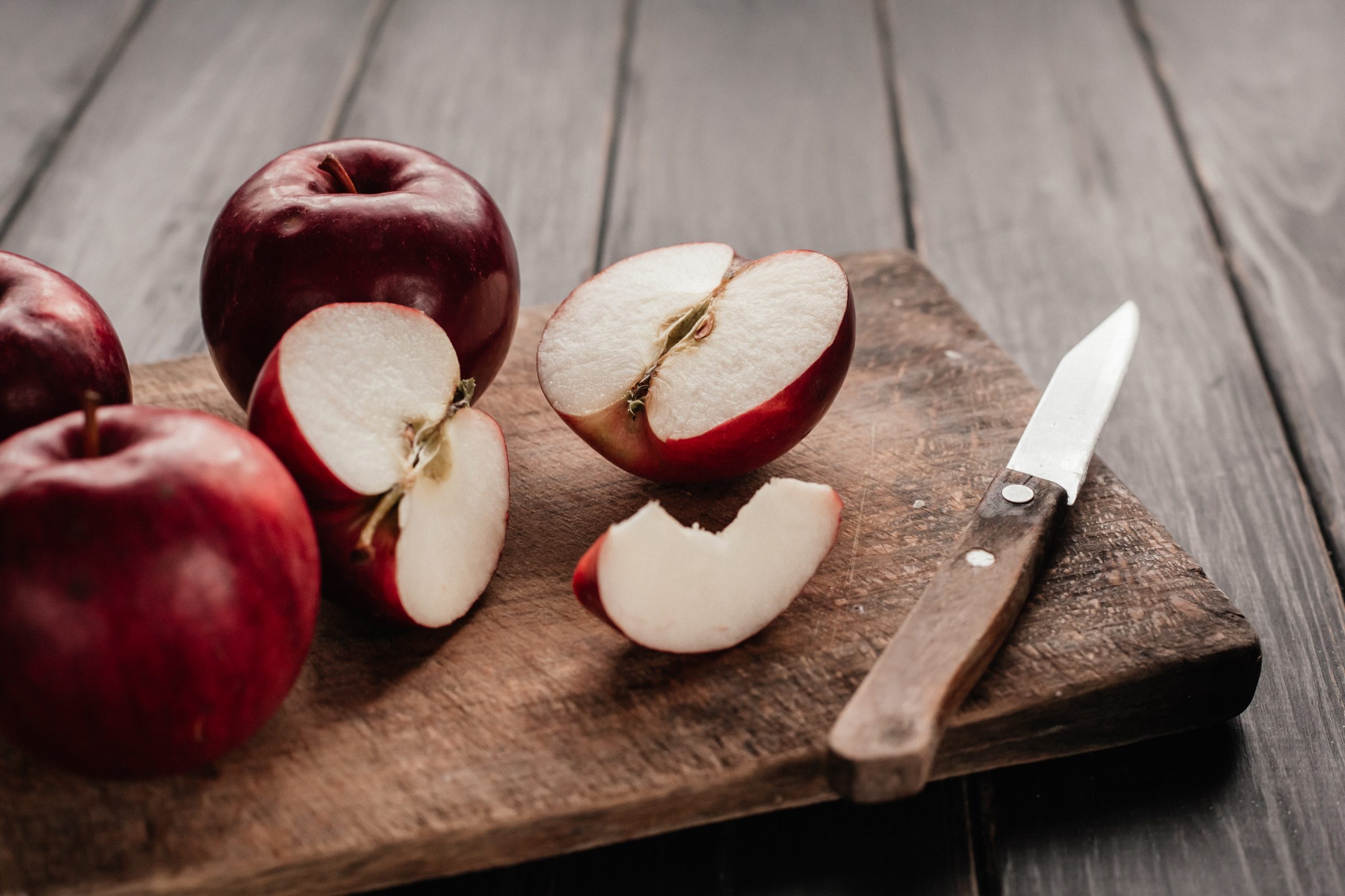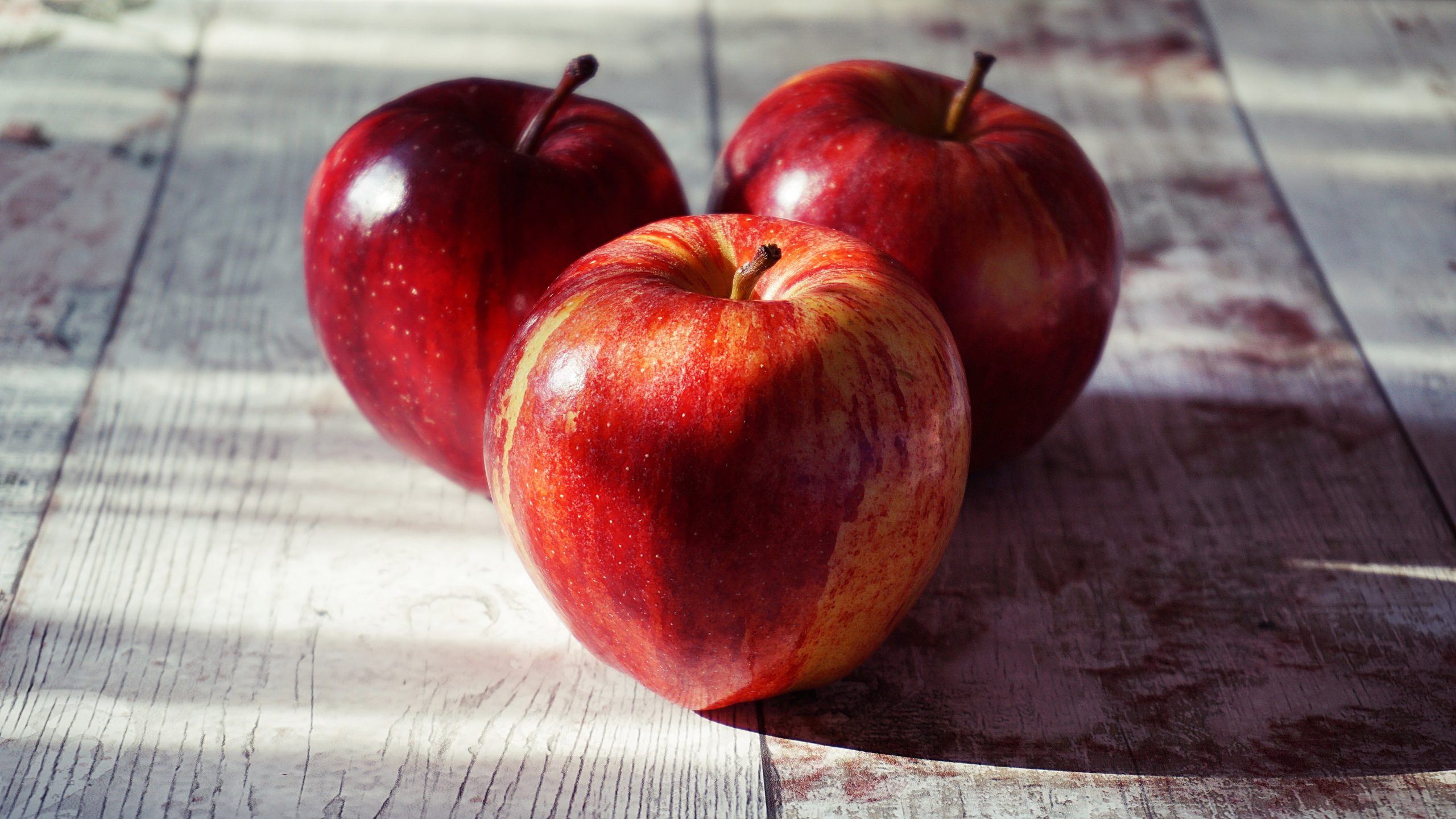If you want to pick the freshest apple, you need to know what to look for. The top 3 things you should be looking for include the fruit’s bright, sweetly tart flavor, the smooth and tough skin, and the ability to keep the apple fresh for longer.
Picking apples is a fun activity that families and friends of all ages may enjoy. We wanted to share some of our favorite apple-picking tips with you in case you are a frequent visitor who wants a refresher on choosing the best apples.

What Exactly is an Apple?
The apple tree (of the genus Malus), which initially appeared in Asia, produces apples as its fruit. They have been around for centuries, and early varieties were the first ones European colonists introduced to America. Except for the stem and five inside seeds, it is fully edible. The main nutritional advantage of an apple, primarily made up of water, and natural sugars, are dietary fiber. There are also trace levels of vitamins A and C.
The Perfect Apple: 6 Selection Tips
- Please pick up the apple and feel its peel to determine its firmness. Even a little skin patch can be gently pressed to check for firmness. Avoid apples with skins that are obviously mushy, squishy, or that easy indent. Though they won’t be the best for fresh eating, these aren’t necessarily poor apples. Instead, use softer apples to make homemade applesauce or fresh juice or to combine in a smoothie.
- Turn the apple in your hand as you check for firmness to inspect the fruit’s quality visually. Some fruit markings, such as scuffs or dots, are caused by nature and don’t necessarily indicate a poor apple. However, if you intend to bite or slice into the apple, you should steer clear of those with bruising or visible symptoms of decay because they won’t provide the ideal eating experience.
- Learn about your favorite apple kinds features, like its color, size, shape, and general appearance. Numerous apple varieties are available today, and more are being developed all the time. You’ll quickly discover which apples are better for eating fresh (Honeycrisp apples, SweeTango® apples) and which are excellent for baking (Golden Delicious apples, Pinata® apples). Other apples are perfect no matter how you want to consume them (such as Fuji, Pink Lady, and Piata apples). For the finest apple-eating experience, choose a variety most suited to your home usage!
- Look at the apple’s color: Contrary to popular belief, color is not the best predictor of a delicious apple, although it can be useful when choosing this fruit. Apples with vibrant colors absorb a lot of sunlight, which produces delicious flavors. Look for crimson or pink-orange tones to dominate the green background on red-varietal apples. Apples with a lighter color can also be used at home. It would be best to use them when cooking because the final food won’t care about the hue.
- Examine your apple’s scent: An apple that is high-quality and fresh should smell good. According to varietal, some apples (like Gala) will have a greater aroma than others.
- Make sure it’s a Stemilt apple, I promise—there’s the reason for this shameless ad! Stemilt works arduously daily to satisfy customers, including sending excellent apples to your establishments. When you go shopping, we hope you’ll keep an eye out for the ladybird on the apple sticker. The ladybird indicates that the apple you are eating came from Stemilt’s orchards in Washington! Additionally, if you buy organic apples, you can tell if it’s organic by searching for the leading nine before the PLU code, which is a four-digit number, on the apple’s label.
How do you Choose Ripe Apples?
Checking for flaws and hardness are the only criteria to consider when choosing an apple at the farmers’ market or supermarket store. Although some apples will have a discernible sweet aroma, the simplest way to tell if an apple is still fresh is to feel it; an apple that feels too soft or spongy to the touch is overripe.
Additional Advice for Purchasing and Storing Apples
Look for a deal when looking for apples to add to a dish! It’s usually always possible to find at least one variety of apples on sale at your local grocery store. Adding a few pounds of inexpensive but high-quality apples to your wintertime diet may be done on a budget. Only select vibrant, smooth, firm apples; avoid bruises, dark patches, or a mushy feel. Try rubbing your fingers across an apple to see whether it’s still fresh; if the skin wrinkles, it’s not. Apples can be kept on the counter for a few days, but to keep them crisp and fresh for several weeks, try to store apples in your refrigerator drawers.
Which Apple Color is Best?
Despite the modest changes, green apples make the pack healthier because they contain less sugar and carbohydrates and more fiber, protein, potassium, iron, and vitamin K. The only significant nutritional difference between red and green apples is that green apples have approximately twice as much vitamin A as red apples.
How are Apples Stored?
A fruit basket is common on the kitchen counter or the dining table in Indian homes. It tells you how apples can be stored at normal temperatures and are bulked up with apples and bananas (mainly), right? Not true! Apples keep best in cold environments, so arrange them in the fruit drawer of your refrigerator. Moisture is another thing that apples require. So cover the apples with a paper towel that has been dampened. Wrapping each apple in a moist towel will help your apples stay fresh for a little while longer if you have a little more time on your hands.
More dos and don’ts are listed below:
1. Should I wash? There is never a doubt—yes! A report shows apples are among the top three fruits for keeping pesticides.
2. Because they deteriorate more quickly, consume the larger apples first.
3. Store apples away from onions and potatoes since they hasten the ripening of the fruit.
4. Discard any rotten fruit as soon as you see it.
5. Apple browning is one factor that can entirely damage their flavor. As the name implies, it alters the fruit’s color and the less obvious qualities of taste, scent, and freshness. Browning is a problem, particularly with cut fruits. Some experts also advise using lemon water. However, an Epicurious experiment shows that salt water works better at preventing browning.
How can I Assess the Quality of Apples?
A few methods exist for determining the quality of apples before buying or eating them:
- Look for apples that are uniform in color and unblemished by cuts, bruises, or discoloration.
- Smell: Apples ought to have a delicious, fresh scent. They are no longer fresh if they smell moldy or spoiled.
- Apples should feel solid to the touch. They are probably overripe if they feel mushy or soft.
- Weight: Apples with more weight tend to be fresher and have more juice.
- Apples have a peak season, yet they are available all year round. Verify that the apple is in the season before selecting a fresh one.
Remember that these are only general recommendations and that some apple varieties may have minor differences. Before eating, always look for mold or any other symptoms of deterioration.
How do you tell if Apples are Bad?
A few indications that an apple has spoiled include:
- Look for mold or skin stains on the outside of the body.
- Bad apples will smell musty and distinctive.
- Use your thumb to press the apple gently. It has spoiled if it yields easily or feels mushy.
- Take a tiny bite to check the flavor; if it tastes wrong or has a fermented flavor, it is no longer safe to consume.
An apple should be thrown away if it exhibits any of these symptoms. Even if an apple has a small wrinkle but else appears and smells great, you can still eat it.
Side Effects of Eating Bad Apples
Food poisoning, which can result from eating rotten fruit, can produce symptoms like:
- Nausea and diarrhea
- Diarrhea
- Stomach pain
- Fever \sHeadaches
- Fatigue
Some people may experience allergic symptoms like sneezing, runny nose, and itching if the apple has mold. In extreme circumstances, moldy food can cause serious health concerns like respiratory troubles or brain diseases.
Before eating apples, it’s crucial to store them correctly and verify their freshness to prevent food poisoning or allergic responses.
Conclusion
Examining your apple’s freshness is the best way to gauge it visually. A quick visual inspection will reveal bruises and blemishes, which indicate the presence of freshness and ripeness. This will also enable one to pick the most desirable apples from the crowd. It is also a good idea to carry out a quick scan of the bag to ensure the contents are not stale. We hope our guide has helped you pick fresh apples and storage tips.
